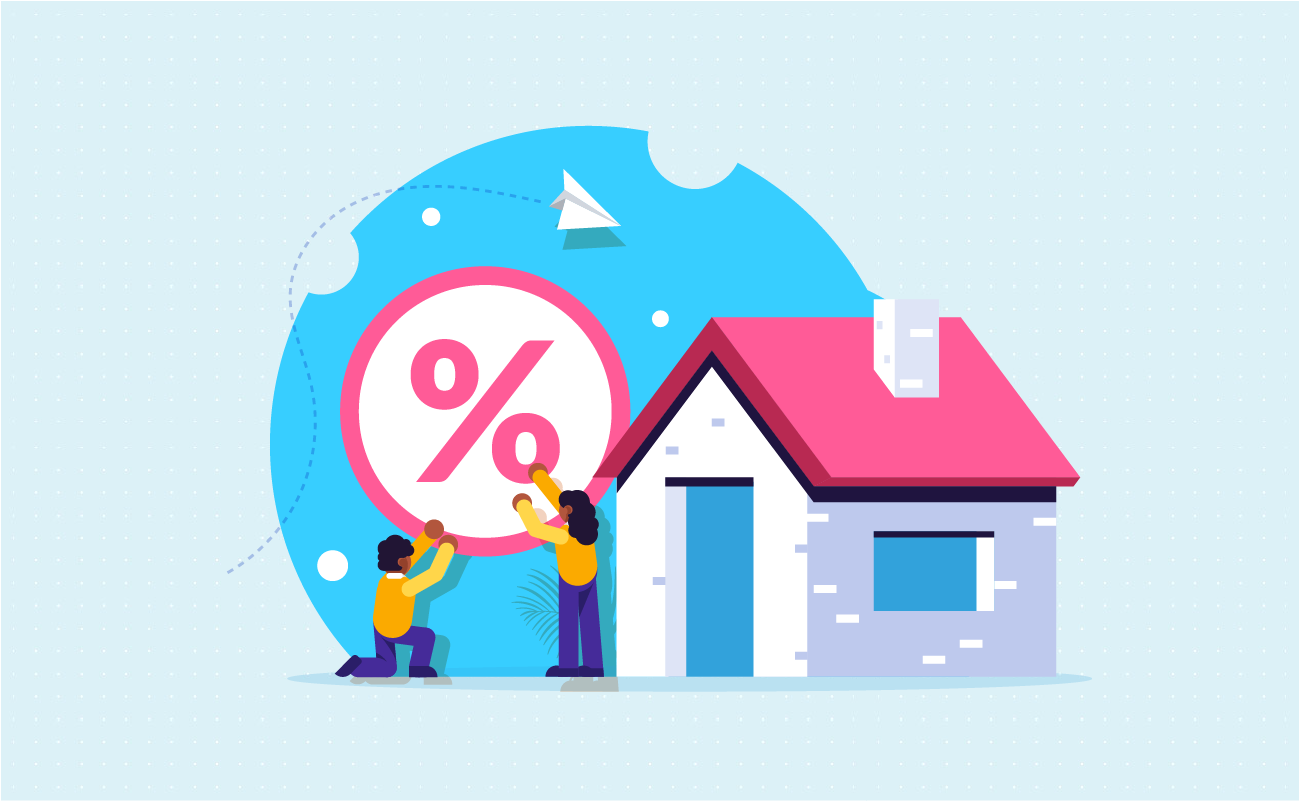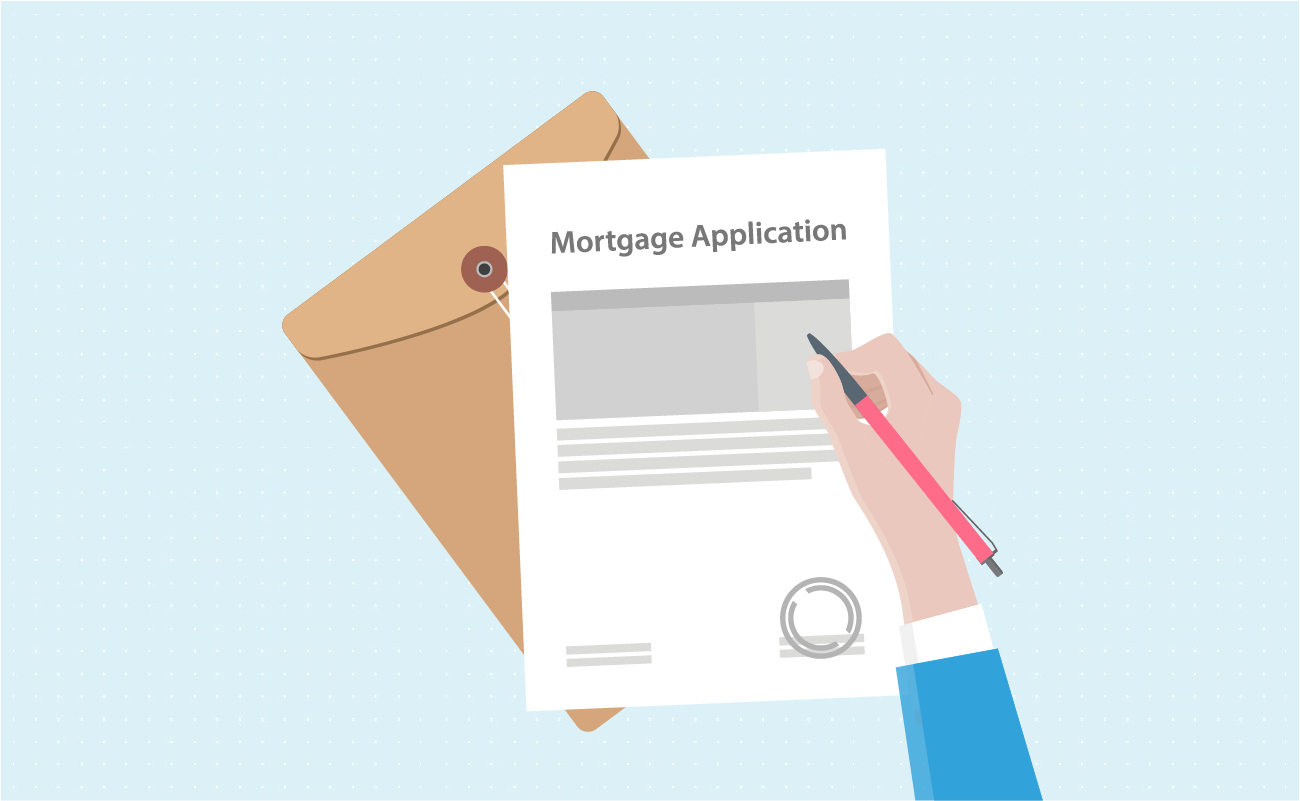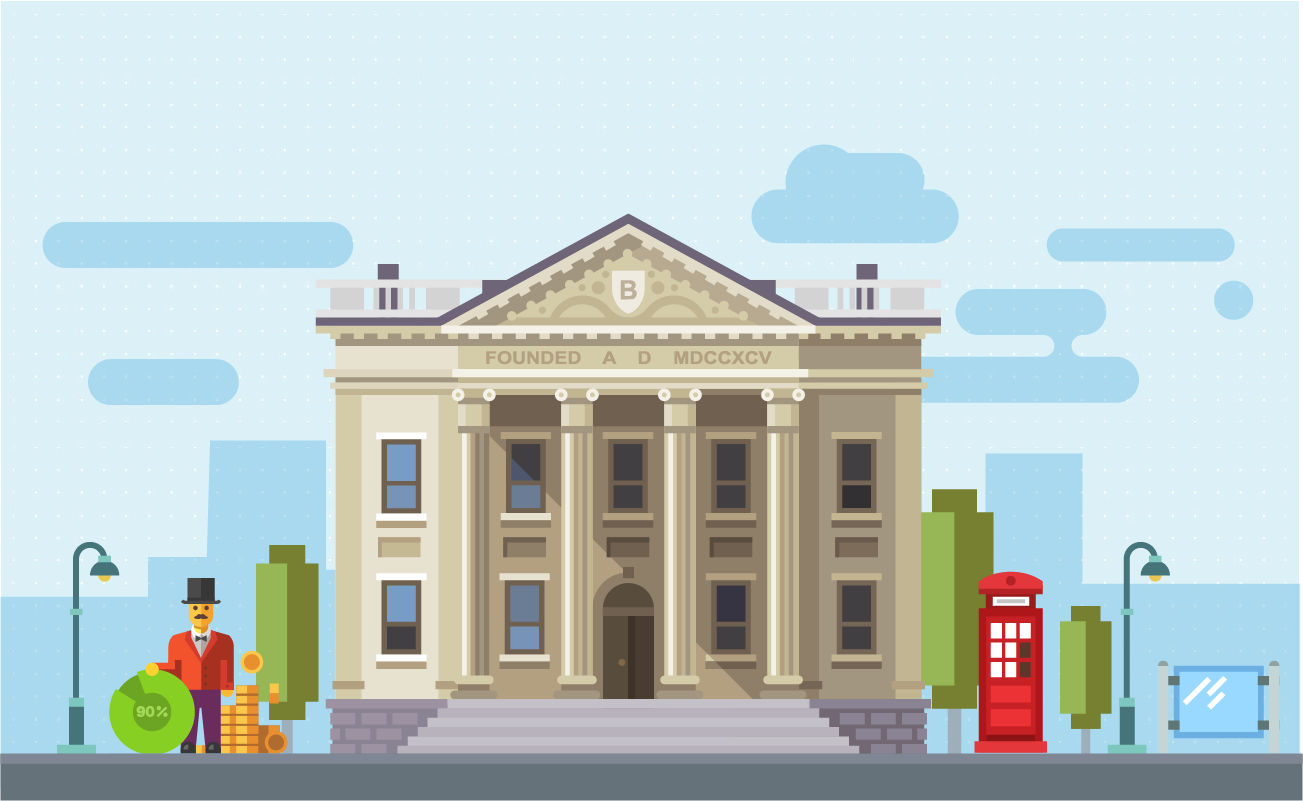 Business Loan Calculator
Business Loan CalculatorUse this calculator to quickly figure the montly payment amounts due on a commercial property. Results show regular amortiziong principal and interest payments along with monthly interest-only payments. When you are done with your calculation you can view an amortization table below the results.
Guide published by Jose Abuyuan on February 27, 2020
If you’re running a company, chances are you’re planning on expanding your business in the future. And depending on your industry, streamlining efficient business operations requires having your own commercial property or renovating your existing office.
To reach your business goals, you’ll need access to large capital. This is where obtaining a commercial real estate loan can help boost your business. In this guide, we’ll discuss what commercial mortgages are, how they work, and how they differ from residential mortgages. We’ll also talk about the application process and the best sources for commercial real estate loans.

Commercial mortgages are commonly used by companies for financing, acquisition, and development of different types of business property. This includes office buildings, shopping malls, hotels, restaurants, and industrial facilities. Commercial real estate is used by companies as an income-producing asset.
Commercial loans are obtained by companies to renovate or expand their property. It gives them access to capital in order to make continuous developments that will help them boost their profits. On top of this, they can lease out a portion of the space and collect rent from other businesses using their property.
Commercial mortgages have some similarities with residential mortgages. But instead of obtaining a loan to own a home, you are borrowing money to secure property for business use.
The table below highlights differences between a residential mortgage and commercial mortgage:
| Loan Details | Residential Mortgage | Commercial Mortgage |
|---|---|---|
| Borrower | Individual | Business entity |
| Government- backed loans | Conventional loans are backed by Fannie Mae or Freddie Mac Government-insured loans: FHA USDA VA | Banks and insurance companies do not have government backing Government-backed SBA loans are granted through qualified lending institutions |
| Repayment terms | 15 or 30-year terms | Usually 3 to 7 years, sometimes 10 to 25 years |
| Down payment | 10% ave. down payment for conventional loans 3.5% for FHA loans You can choose to make no down payment for USDA and VA loans | Usually between 10% – 30% Sometimes 50% or more |
| Interest rates | Creditworthiness based on credit history and credit score 30-year fixed: FICO score 760-850 – 3.15% APR FICO score 620-639 – 4.74% APR (as of Feb. 26, 2020, MyFICO) | Creditworthiness based on personal credit history, income, the company’s financial statements, collateral, business plan, projected earnings, etc. FICO score 660 and up Rates per bank may vary* Banks – 3-14% APR SBA 7(a) loans – 7.25%-9.75% APR SBA 504 loans – 4%-6% APR |
| Loan-to value ratio | Conventional loans – 95% LTV FHA loans – 96.5% LTV USDA – 100% VA – 100% | Allows 60%-80% LTV Lenders specify LTV depending on the type of property |
| Down payment | Conventional loans average down payment – 10% FHA loans – as low as 3.5% USDA loans – no down payment required VA loans – no down payment required | 20%-30% Sometimes 50% or more |
| Approval and closing process |
Conventional loans, 30-45 business days | Can take 3-4 months |
Residential mortgages are usually intended for individual borrowers looking for a primary home. These are also used by borrowers who want to buy short-term houses, eventually selling them to move to another home.
Commercial mortgages, on the other hand, are intended for business entities such as corporations, limited partnerships, developers, funds and trusts. Many business entities are usually established for the purpose of owning commercial real estate.

In both commercial and residential mortgages, borrowers with lower loan-to-value ratio (LTV) are likely to qualify for better rates compared to those with higher LTV. This is a percentage that measures the value of the loan against the value of a property. LTV is calculated with the formula below:
LTV = Loan amount / purchase price or appraised value
For example, the LTV for a $300,000 property with a $200,000 loan would be 66.67%.
Lower LTV means a borrower has higher equity in the property, which decreases risk for the lender. But residential mortgages are more lenient with LTV compared to commercial mortgages.
For home loans, high LTV is sometimes accepted for different types of loans. For instance, up to 95 percent LTV is acceptable for conventional loans backed by Fannie Mae or Freddie Mac. For FHA loans, up to 96.5 percent LTV is accepted. USDA and VA loans allow up to 100% LTV on mortgages.
On the other hand, commercial mortgages only typically allow between 60 percent to 80 percent LTV. And depending on the type of commercial loan, LTVs are specified in a category. For instance, 80 percent LTV is accepted for the construction of multi-dwelling units, while 65 percent is accepted for land development.
Commercial mortgage payments are often structured differently from traditional amortizing loans. Some lenders may expect borrowers to pay down the full loan amount earlier, which is why commercial loans are structured with balloon payments by the end of a short term.
Commercial mortgages may follow repayment terms as short as 5 or 7 years, after which a final balloon payment is due. The balloon payment is basically a lumpsum compensation that pays down the remaining balance of the loan.
Borrowers may also sometimes opt for interest-only payments during the entire duration of the loan, then make the hefty balloon payment once the term is through. With interest-only payments, you only cover interest charges during the entire term. Likewise, you pay the rest of the principal balance with the full balloon payment.
Finally, depending on your arrangement with a lender, there are instances where commercial mortgages may still adhere to a fully amortized payment schedule with longer 20-year terms.
Unlike residential mortgages, commercial property loan terms can be as short as 3 to 5 years or as long as 10 years. Though depending on the type of loan, there are commercial mortgages as long as 25 years. In this respect, the commercial mortgage payment duration is often not as long as home loans. Moreover, it’s important to note that a short commercial mortgage term is based on a longer amortization schedule (e.g. 30-year mortgage).
For example, a lender might approve a $1 million commercial loan with 9.5 percent interest. The amortization is based on a 30-year loan, but the loan term is 7 years. The borrower makes monthly payments of $8,408.541 for 7 years. And by the end of the loan term, he makes a final balloon payment of $941,633.22 to pay down the balance in full.
To determine your monthly payment and balloon payment on your commercial mortgage, use our calculator above.

Before applying for a commercial real estate loan, ask about all the required documents. Commercial lenders usually ask for your company’s financial statements and tax returns within the last 3 to 5 years to assess your business stability. Other documents you need to prepare include:
Depending on the lender, they may require more documents other than the ones mentioned above. And the more documentation needed, the longer the approval process. This is because all the required documents must be verified.
You can get a preliminary response (pre-approval) on the same day or next business day. However, this is far from a guaranteed approval. Lenders take around 10 to 20 business days to evaluate your financial background and make detailed credit checks. Your commercial mortgage application is then further reviewed by stringent underwriters. These people would sometimes even meet borrowers and their business associates before deciding on approving a loan.
Once you receive underwriter approval for your application, make sure to finalize the terms before signing any agreements. Afterwards, you must wait for the loan to materialize. Commercial lenders usually take 3 to 4 months to process and close your deal.
When you hear about ‘points’ in commercial property lending, it is usually the percentage a lender takes from your loan. This means that if your interest rate is 10 percent with 2 points, the true cost of borrowing your money is 12 percent.
In this respect, a low-interest mortgage may be saddled with all sorts of fees. This is how your lender earns the 2 percent. They may impose costly upfront fees, such as legal fees, survey charges, and appraisal fees. Some of these fees are required before approval, which may rack up to thousands of dollars. Make sure to factor in these costs to prepare your finances. It’s also better to know if your application will be approved ahead of time.

If a direct lender is asking for exorbitant fees before your loan is approved, it could be a scam. There are many scammers in commercial lending who might try to obtain costly upfront fees from borrowers without getting the loan approved. For instance, an origination fee is typically due only at the time of closing. If you find any of their demands suspicious, look for another lender.

Where do you obtain commercial loans? There are many commercial lenders that can offer decent rates and terms. However, not all of them offer government-backed loans. Government support can help you obtain lower rates at manageable payment terms. Try to check SBA loans first and compare their rates and terms with credit unions and banks. This way, you have a clear idea of which loan can better work for your business.
Below are some of the best sources for commercial real estate loans:
You can obtain a favorable commercial mortgage deal by getting government-secured loans. Almost all loans backed by SBA are fixed-rate loans. Likewise, if you make timely payments on these loans, it will reflect well on your credit score. Two popular Small Business Administration loans are the SBA 7(a) loan and the SBA 504 loan.
SBA 7(a) loans are used to buy land and buildings. These are ideal for construction of new property or renovating old buildings. SBA 7(a) loans are only eligible for borrowers who intend to occupy majority of the property. This financing program allows business owners to borrow up to $5 million from any SBA-approved lender. You have the option to take fixed or variable rates, or a combination of both. For the payment structure, the loans are usually fully amortized with terms up to 25 years.
On the other hand, SBA 504 loans are granted to business owners who already occupy majority of their property. This is also made of 2 loans: The first loan is from a Certified Development Company (CDC) which funds 40 percent of the borrowed amount, while the second loan is from a bank which funds 50 percent of the loan. SBA 504 loans can work if you are looking for larger financing.
Borrowers can obtain up to $5.5 million from the CDC part of the loan. If you also obtain $5 million from the bank portion, you can get more than $10 million to finance your business expansion.
For interest rates, CDC loans are based on U.S. Treasury rates which range from 4 percent to 5 percent (as of 2017). The payment structure is also fully amortized with a maximum repayment period of 20 years.
If you intend to buy property for profit and finance your investments with loans, you can obtain an investment property loan. This is ideal if you are not running an owner-occupied business but need financing to purchase or restore a property.
Look for investment property loans from banks or credit unions that offer relatively low interest rates with high loan amounts. While rates and terms vary per bank, their interest rates usually range from as low as 3 percent, to as high as 14 percent. Shop around for different banks and choose the one with the most favorable rate. Banks and credit union offer terms between 5 years to 25 years.
The advantage of obtaining a commercial loan from a bank instead of independent lenders is the security it offers. Banks have a meticulous reporting system, which means all your payments are automatically reflected in their accounts. Since they keep tabs when you make timely payments, this helps boost your credit score. A higher credit score with a history of timely payments makes it easier to apply for future commercial loans.
Hard money loans or bridge loans offer financing that banks usually cannot provide. These loans come from individuals or private companies who lend funds based on collateral, which is your property.
Hard money lenders are critical about getting paid back. Thus, they require solid proof that you can generate enough income in the succeeding years. Similar to banks, they also check your credit history and credit score before they approve your loan. Loan terms typically range from 12 months to 3 years, which make it a good short-term loan. This is ideal if you need money to renovate your property or move your business to a more favorable location.
However, borrowing from an independent commercial entity involves managing your lender’s expectations. If you fail to produce the expected profits, a worried private lender might back out and remove their funding. Independent lenders may even seize assets you signed as collateral until they see there’s proof of return on investment.
Moreover, hard money loans usually impose higher down payments and higher interest rates. If you cannot pay them back within the agreed term, you might be forced to refinance your loan to a traditional one. Make sure to have all your bases covered if you choose this type of loan.

Commercial mortgages are vital financing tools that aid small and large companies in developing their business. While it has many similarities with residential mortgages, commercial real estate loans are harder to secure.
Business lenders require many financial and legal documents. They also impose stringent background checks on business owners and their associates. Moreover, it typically costs more to secure a commercial mortgage. Apart from the larger loan amount, higher down payment and interest rates, it enforces a variety of fees even before your loan is approved.
Though the process takes longer, obtaining a commercial property loan is well worth it. This is especially true once you improve your business operations and significantly increase your profits. Even if you’re not looking to get a commercial loan soon, knowing these steps will help you prepare in the future.
Need help understanding personal loans? Use our calculator and read our guide.
Jose Abuyuan is a web content writer, fictionist, and digital artist hailing from Las Piñas City. He is a graduate of Communication and Media Studies at San Beda College Alabang, who took his internship in the weekly news magazine the Philippines Graphic. He has authored works professionally for over a decade.